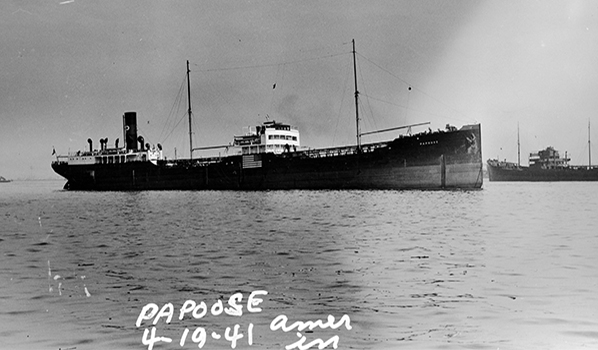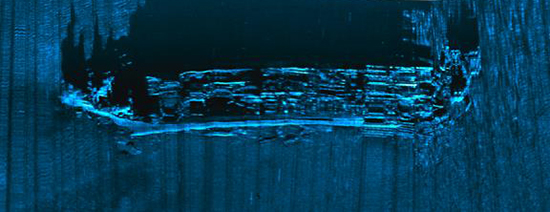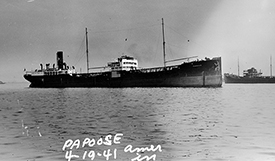Papoose

Ship Stats
Location: 35°37'33.65"N, 74°53'27.96"W (35.62599, -74.89110)
Depth: 200 feet
Vessel Type: Tanker
Length: 412 feet Breadth: 53.3 feet
Gross Tonnage: 5,939 Cargo: Water ballast
Built: 1921, South Western Ship Building Company, San Pedro, California, USA
Hull Number: 25 Port of Registry: Delaware, USA
Owner: Petroleum Navigation Company, Houston, Texas, USA
Lloyd's Register Details: Steel hull, two decks, fitted for oil fuel, longitudinal framing, triple expansion three cylinder engine
Former Names: Silvanus (Dutch-Indies Steam Tanker Co., 1921-1926)
Date Lost: March 19, 1942
Sunk By: U-124 Survivors: 32 of 34 survived (2 dead)
Data Collected on Site: Side scan sonar
Significance: Casualty of World War II's Battle of the Atlantic
Wreck Site
The wreck site is located in a little over 200 feet of water, northeast of Cape Hatteras, North Carolina. The wreck is large, intact and upright on its keel. Sonar imaging suggests there remains a high degree of relief.
Through historical research and with the assistance of the recreational diving community, NOAA believes it has identified the wreck site of Papoose. The confusion regarding the identification of some of the wrecks in the area stem from the USCG Gentian survey in 1943. During this survey, it was assumed that a wreck near Cape Lookout was Papoose and dismissed other USCG reports that remains of Papoose were reported off Cape Hatteras two days later. This type of confusion is understandable with a large number of shipwrecks so close together and the "fog of war" effect.
Additionally, since 2008, with the assistance of local divers and avocational researchers, NOAA has determined that other initially reported shipwreck identities were incorrect and has been working to clarify their identities. Working with our partners, sites that had been identified as Mirlo, Papoose, W.E. Hutton, and San Delfino have now been more accurately identified as San Delfino, W.E. Hutton, Ario, and Papoose respectively (once believed Mirlo is in fact San Delfino; site of believed Papoose is actually W.E. Hutton; site of W.E. Hutton is Ario; and the site of believed San Delfino is actually Papoose).
NOAA continues to welcome information and data that can assist and strengthen ship histories, identification and personal stories.

Historical Background

Originally named Silvanus, Papoose was built in 1921; however after a tragic accident that destroyed the ship, the hull was auctioned to the Petroleum Navigation Company of Houston, Texas. On March 31, 1927, it was relaunched as Papoose and operated along the East Coast, making frequent trips back to Texas. On March 18, 1942, during one of those trips back to Texas, Papoose was traveling alone just south of Cape Hatteras, North Carolina, when it was spotted by U-124. The U-boat quickly maneuvered into an attack position and fired a single torpedo into the tanker's port side. The resulting explosion penetrated the fuel tanks and ruptured the engine room bulkheads, killing two crew members.
The engines came to a stop, and the captain ordered lifeboats lowered and to abandon ship. The crew managed to make it to two lifeboats, and as they started to move away from the ship, a phosphorescent stream from a second torpedo passed near one of the lifeboats, hitting the drifting tanker on the starboard side. The second torpedo tore a large hole at the water line and the tanker rolled to the starboard side. The tanker did not sink immediately and remained adrift for at least two more days. Although Papoose was attacked in the vicinity of Cape Lookout, the movement of the Gulf Stream likely carried the ship to its current position north of Diamond Shoals. Survivors were picked up by USS Stringham (DD-83) and taken to Norfolk, Virginia.

